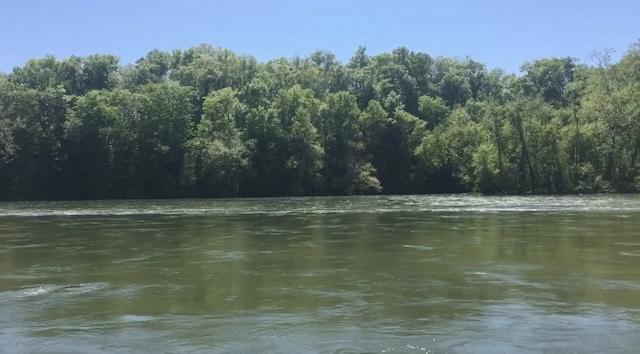While doing research for a book about the early history of Mt. Harmony Baptist Church, I stumbled across the unpublished memoirs of Luther Ray Johnson, who lived in the Fork in the late 1800s. He was educated at Carson-Newman (now University), became a preacher, and then moved to Kansas, where his memoirs have since resided.
His son gave me permission to share from his father’s stories of life in the Fork, the lands between the French Broad and Holston Rivers all the way to the Jefferson and Sevier county lines.
Luther’s childhood years near the French Broad River held certain fascinations. The steamboats that plied the waters were of great interest to him and his friends. When the water was up after a rain, the steamboat’s whistle and chugging effort of pulling barges and carrying its cargo of people and merchandise could soon be heard, beckoning to youngsters who would run to the water’s edge to watch the tall stacks puff black smoke and to see “the wheel toss cascades high and the waves slosh water onto the banks.”
On March 5, 1890, a family who rented from Luther’s grandfather Rufus Johnson experienced a great tragedy. William Maples’ sons Johnnie and Samuel, ages 14 and 10, ventured out in a yawl to get a closer look at a steamboat.
Although Luther’s writings give details about how the boys drowned when water from a steamboat’s wake filled their vessel, newspaper articles at the time told that the boys had left out on the river from T.R.C. Campbell’s mill to look at the J.W. Bussell, a steamboat that had sunk just a few days before.
The Bussell had been caught in a storm near Johnson’s Island at what is now Johnson University, and though they got the steamboat close to the riverbank, its crew of Captain Jack Newcomb, Payne England, John England, the fireman and three deck hands had to jump onto the attached barge. Engineer Alex Davis had to swim. Because the steamboat was improperly loaded on the leeward side, the wind easily toppled it, and soon all that was visible was the top of the pilot’s house and the smokestacks.
Whatever the young boys’ reason for being on the river when their own little boat capsized, Luther Baker, a friend who had gone with the Maples boys, drowned as he attempted to swim ashore, while Johnson said yet another friend who had refrained from participating in the adventure watched in horror from the riverbank as Johnnie and Samuel were swept away.
The first steamboat to the area was the Atlas, which arrived in 1828. Although several others traveled the French Broad over the decades, the rivers that defined the Fork were often too shallow for them to navigate. Many people today often think the ripples they see in the rivers are evidence of the v-shaped rock weirs created by the Cherokee for the purpose of catching fish, but most of the lines of stones are the remnants of the U.S. Army Corps of Engineers’ project in the late 1800s to provide deeper channels for steamboats. They tore out the fish dam at Campbell’s Mill and built a retaining wall 408 feet long, making the river 10 inches deeper at that location. However, despite best efforts, the steamboat industry was not sustained, especially after bridges and road improvements made other travel easier.
Memorial stones for the three boys are at Old Salem Cemetery. Along with fish weirs and steamboats, they have been forgotten in the Fork.
Jan Loveday Dickens is an educator, historian and author of Forgotten in the Fork, a book about the Knox County lands between the French Broad and Holston Rivers, obtainable by emailing ForgottenInTheFork@gmail.com.





Thank u for sharing East Tennessee’s rich history.